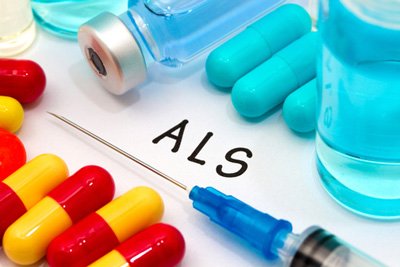New therapy halts progression of ALS in mice
Posted: 29 January 2016 | Victoria White | No comments yet
Researchers have announced that they have essentially stopped the progression of amyotrophic lateral sclerosis (ALS) for nearly two years in one type of mouse model…


Researchers have announced that they have essentially stopped the progression of amyotrophic lateral sclerosis (ALS), or Lou Gehrig’s disease, for nearly two years in one type of mouse model used to study the disease.
The findings, scientists indicate, are some of the most compelling ever produced in the search for a therapy for ALS.
“We are shocked at how well this treatment can stop the progression of ALS,” said Joseph Beckman, a distinguished professor of biochemistry and biophysics in the College of Science at Oregon State University (OSU), and principal investigator and holder of the Burgess and Elizabeth Jamieson Chair in OSU’s Linus Pauling Institute.
The mouse model used in this study is one that scientists believe may more closely resemble the human reaction to this treatment, which consists of a compound called copper-ATSM. It’s not yet known if humans will have the same response, but researchers are moving as quickly as possible toward human clinical trials, testing first for safety and then efficacy of the new approach.
Copper-ATSM is a known compound that helps deliver copper specifically to cells with damaged mitochondria, and reaches the spinal cord where it’s needed to treat ALS. The researchers say that the compound has low toxicity, easily penetrates the blood-brain barrier, is already used in human medicine at much lower doses for some purposes, and is well tolerated in laboratory animals at far higher levels. Any copper not needed after use of copper-ATSM is quickly flushed out of the body.
Experts caution, however, that this approach is not as simple as taking a nutritional supplement of copper, which can be toxic at even moderate doses. Such supplements would be of no value to people with ALS, they said.
Some mice survived for more than 650 days
Using the new treatment, researchers were able to stop the progression of ALS in one type of transgenic mouse model, which ordinarily would die within two weeks without treatment. Some of these mice have survived for more than 650 days, 500 days longer than any previous research has been able to achieve.
In some experiments, the treatment was begun, and then withheld. In this circumstance the mice began to show ALS symptoms within two months after treatment was stopped, and would die within another month. But if treatment was resumed, the mice gained weight, progression of the disease once again was stopped, and the mice lived another 6-12 months.
“We have a solid understanding of why the treatment works in the mice, and we predict it should work in both familial and possibly sporadic human patients,” Beckman said. “But we won’t know until we try.”
Familial ALS patients are those with more of a family history of the disease, while sporadic patients reflect the larger general population.
“We want people to understand that we are moving to human trials as quickly as we can,” Beckman said. “In humans who develop ALS, the average time from onset to death is only three to four years.”
Copper-ATSM could be used to treat carriers of SOD mutant genes
The advances are based on substantial scientific progress in understanding the disease processes of ALS and basic research in biochemistry. The transgenic mice used in these studies have been engineered to carry the human gene for “copper chaperone for superoxide dismutase,” or CCS gene. CCS inserts copper into superoxide dismustase, or SOD, and transgenic mice carrying these human genes die rapidly without treatment.
After years of research, scientists have developed an approach to treating ALS that’s based on bringing copper into specific cells in the spinal cord and mitochondria weakened by copper deficiency. Copper is a metal that helps to stabilise SOD, an antioxidant protein whose proper function is essential to life. But when it lacks its metal co-factors, SOD can “unfold” and become toxic, leading to the death of motor neurons.
There’s some evidence that this approach, which works in part by improving mitochondrial function, may also have value in Parkinson’s disease and other conditions, researchers said. Research is progressing on those topics as well.
The treatment is unlikely to allow significant recovery from neuronal loss already caused by ALS, the scientists said, but could slow further disease progression when started after diagnosis. It could also potentially treat carriers of SOD mutant genes that cause ALS.
Related conditions
Amyotrophic Lateral Sclerosis (ALS)
Related organisations
Oregan State University



